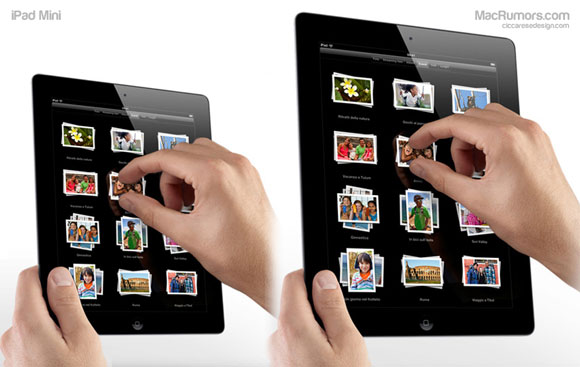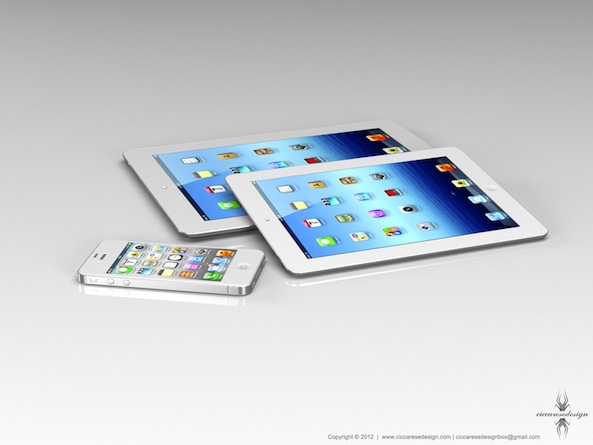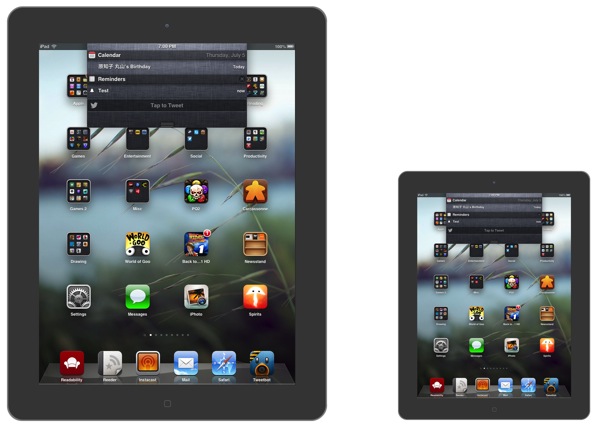The Wall Street Journal was the first of big media outlets to report back in April that a new iPad model with a smaller eight-inch display was in the works.
Then, early in July Bloomberg corroborated the story and just a day later the Journal followed up with a new report of suppliers allegedly gearing up to mass-produce the gizmo in time for a presumed September launch.
And now, The New York Times (finally) gets in on the action, becoming a third major news outlet to put its credibility on the line concerning the iPad mini, claiming Apple would announce the smaller iPad later this year, priced “significantly less” than $499…
Nick Bilton writes in the New York Times piece:
The company is developing a new tablet with a 7.85-inch screen that is likely to sell for significantly less than the latest $499 iPad, with its 9.7-inch display, according to several people with knowledge of the project who declined to be named discussing confidential plans. The product is expected to be announced this year.
For a humorous take on the Times’ non-news reporting, visit 9to5Mac.
Another interesting tidbit gleaned from Bilton’s report recycles an older Times story of how Apple actually had in its labs an iPad mini of sorts back in 2000:
But the first tablet prototype Apple began developing in the mid-2000s had a seven-inch screen, said a former engineer at the company who helped build the smaller prototype and declined to be named to avoid upsetting people at the company today.
Jobs had nixed the prototype device due to its poor battery life and display size, an urban legend has it.
Mr. Jobs thought the device was too small and wondered aloud what it was good for “besides surfing the Web in the bathroom,” this person said.
The iPad currently dominates with a market share ranging between 60 and 70 percent in terms of units sold, depending on who you ask.
The reasons for a smaller, inexpensive iPad are many, chief among them widening the audience for the device. In today’s non-scientific iDB poll, more than half the respondents said they would happily spend $199 on a smaller iPad.
An artist’s rendition of a smaller iPad next to the regular one and iPhone 4S
If the “significantly less” than $499 part of Bilton’s report is true (and how could it not be?), the iPad mini might go for the sweet spot set by Amazon’s Kindle Fire (due for an upgrade soon) and Google’s inaugural tablet, the Nexus 7, both retailing at just $199.
Others have pointed out that Apple could get away selling the iPad mini for between $249 and $299 as a lot of folks are thought to be willing to pay a $50-$100 premium for Apple’s integration and its vast iTunes ecosystem of iPad-optimized apps and digital media.
And conventional logic teaches us that Apple could offset a lower profit on an inexpensive device with an explosion in units sold, provided the low price brings in lots more customers and helps mass-popularize the product.
Tapping its unprecedented economies of scale, the industry-leading buying power that allows the company to cut best deals on components, its world-class marketing and hefty margins that are the envy of the industry, Apple should be easily able to price the iPad mini attractively enough to give Google and Amazon a run for their money, all the while still making plenty of money.
With seven inches diagonally, the iPad mini’s screen would be less than half the iPad’s. Credit: MacStories
If you ask me, if a $199-$249 iPad mini comes out in time for the holiday shopping frenzy, it’ll be game over for competing tweener tablets. The tablet space will effectively become reduced to the dominating iPad lineup and integrated tablets from Google and Amazon, the only two tech Goliaths capable of offering compelling enough an alternative to the iTunes digital empire.
Everyone else will be left fighting for survival in the Others category, which won’t break past a single-digit marketshare.
Does any of this make sense to you?


